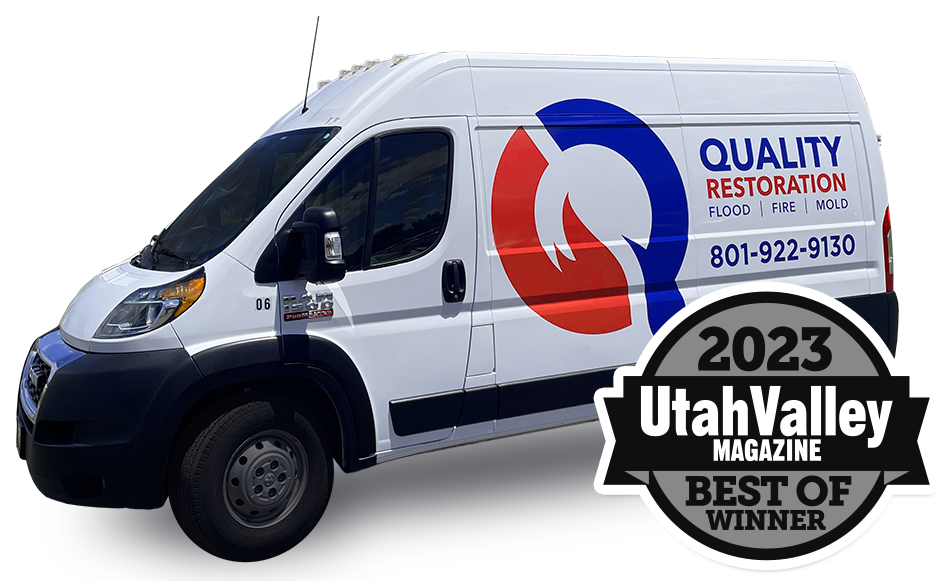Ever wondered if mold behind your walls could cause headaches or breathing problems? It’s a question that might make you rethink indoor air quality. Mold, hidden from sight, can release harmful spores and toxins. These can lead to headaches, brain fog, and serious breathing and brain issues.
Knowing how health effects of mold in walls work is key. Mold thrives in damp spots in buildings. While mold spores usually stay put, other harmful stuff can get out. MVOCs, for instance, can spread through outlets, cracks, and under baseboards, harming air quality and health. Getting experts to test and remove mold is vital to stay safe.
Key Takeaways
- Mold releases toxic gases called MVOCs and mycotoxins into living spaces.
- MVOCs can seep through outlets, cracks, and baseboards, affecting occupants.
- Health symptoms from mold exposure include headaches, flu-like symptoms, and respiratory issues.
- Professional mold remediation is crucial for safe removal and health risk mitigation.
- Regular testing for mycotoxins and endotoxins is recommended by mold-literate doctors.
Understanding the Health Risks of Hidden Mold
Hidden mold in walls can be very dangerous because it’s hard to find until it’s too late. Mold spores can get into homes through many ways, like doors and vents. Molds like Alternaria and Aspergillus can make people sick.
People with allergies or who live in humid places are more at risk. Being exposed to mold can lead to health problems, from mild allergies to serious infections.
Mold can be especially bad for kids with asthma and for people with weakened immune systems. It can also cause severe breathing and brain problems. In the U.S., mold is found in most public buildings, showing a big problem.
Bacteria growing with mold makes things worse. Mold is toxic and hard to find, causing health problems only when it’s too late. It loves moist places like bathrooms and basements.
It’s important to act fast if you see mold. Getting experts to remove it safely is key. Cleaning up mold properly can make your home safe again.
How to Detect Mold Behind Walls
Finding mold behind walls is key to a healthy home. Mold can grow quickly, within 24 to 48 hours, when water is present. Untreated water damage can cause serious structural problems. Here are some ways to find mold behind walls and stop it from spreading.
- Odors: A musty or earthy smell can mean mold is hiding behind walls.
- Health Symptoms: Feeling sick without reason, like runny noses or itchy eyes, might mean mold is present.
- Visual Clues: Paint that peels or bubbles, stains, and discoloration on walls can show moisture issues.
- Moisture Issues: Water stains or warping on walls and ceilings can mean mold is growing due to moisture.
For a more detailed check, using moisture meters and infrared cameras is a good idea. These tools help find mold by showing where moisture is high. They’re great for spotting mold that’s not easy to see.
Professional mold testing, like swab tests and air samples, gives a full picture of mold.
While DIY methods can give clues, they often miss the full mold problem. Getting experts to check ensures a complete mold find. They can also safely remove mold and stop it from spreading further.
Mold behind walls is not just a structural issue; it also harms indoor air and health. Knowing how to find mold behind walls is crucial. Keeping humidity below 50% and fixing moisture issues quickly can stop mold. Early detection and expert help are vital for a safe, healthy home.
Conclusion
Mold behind walls can be very harmful to our health. It can make the air inside our homes dirty by releasing harmful substances. These substances can get into our homes through walls.
Being exposed to mold can cause many health problems. It can lead to breathing issues and allergic reactions. It can even make asthma worse. Also, mold can mix with dust in our homes, which is dangerous if we breathe it in or touch it.
To get rid of mold safely, we must follow EPA guidelines. We need special tools like moisture meters and DNA testing to find mold. Experts are key in removing mold, especially in hard-to-reach places like air ducts.
Preventing mold is important. Keeping humidity low and ensuring good air flow in wet areas helps. Quick action to fix leaks or floods is also crucial. The US EPA and CDC offer important tips to keep mold away.
Being careful and acting fast when dealing with mold is essential. It keeps us healthy and makes our homes safer. We must stay alert and take action to avoid mold problems.




















